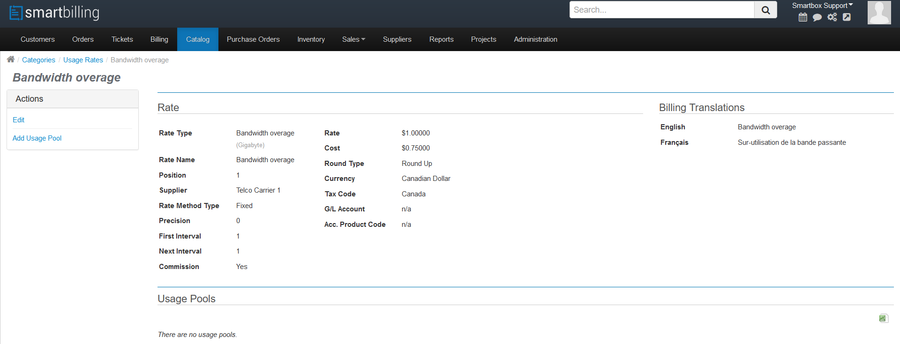Catalog-Usage Rates
Home FAQ page SmartBilling 5.0
Usage Rates are the most important type of charge in SmartBilling; they are applied to a Subscription account for the usage component of the service.
For example, Phone Services would have usage rates for calls on a per-minute or per-second basis;
Internet Usage might include data download per MB, etc. SmartBilling allows users to define the Subscription usage rates and collects the data from suppliers to calculate exactly how to invoice the customer
There are number of parameters or types, which can be used while defining usage charges.
For example, cellular phones used to be offered with calling plans that included different rates for calls during the daytime (peak times), and were charged at higher rate than calls made during night time or on weekends (off peak).
In another example, many of today’s VoIP service offerings charge different rates for calls terminating within the operator’s owned or peered networks, (On-Net), would be charged at lower prices than ‘switched’ calls that must travel over the PSTN (Public Switched Telephone Network) shared between all carriers.
SmartBilling provide lots of flexibility to define rules to account for different usage charges consumed by the customer Usage Rates can currently be invoiced using 3 different strategies:
- • A Fixed, per-unit rate with
- • an Initial (or minimum) fee plus an incremental per-unit component
- • an Included quantity
- • the ability to pool usage within a group of subscriptions
- • A Pass-Through rate, where the cost of the usage indicated in the call transaction is passed on to the customer.
- • A variable charge based on a Rate Plan where Fixed or Pass-Through rates are determined by a lookup value (Destination or Volume-Tier).
- • A Fixed, per-unit rate with
